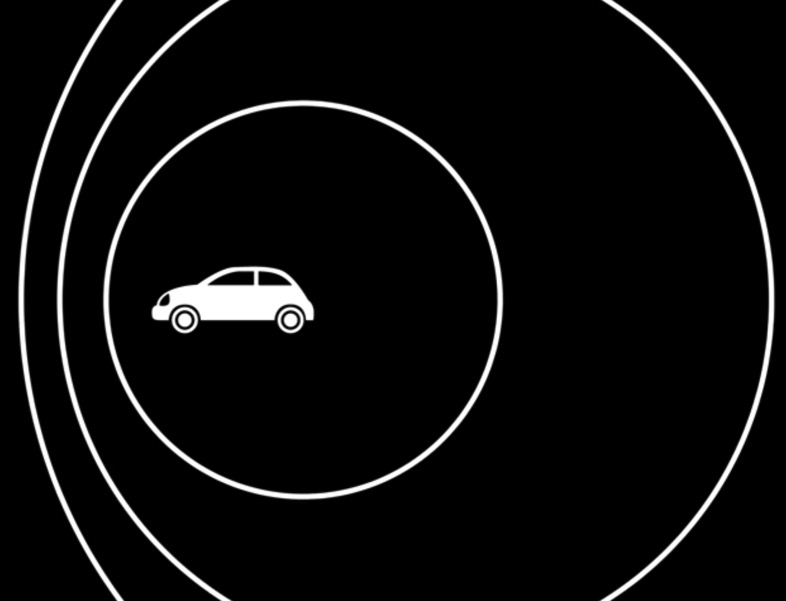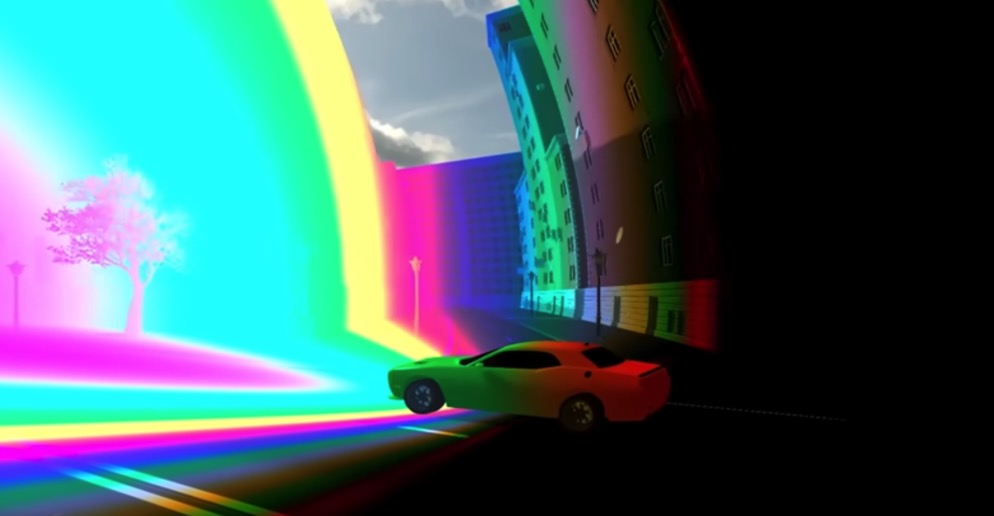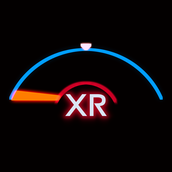What If Light Was Really Slow
만약 빛이 매우 느리다면
Intro
서론
We experience the effects of how slow the speed of sound is on a daily basis.
우리는 일상에서 소리의 속도가 얼마나 느린지 그 효과를 경험합니다.
For example, the siren of an ambulance passing by sounds to pitch down.
예를 들어, 지나가는 구급차의 사이렌 소리가 낮은 음으로 변하는 것을 들을 수 있습니다.
This is known as the Doppler effect.
이것을 도플러 효과라고 합니다.

It happens due to the sound waves contracting and expanding when emitted by a moving object.
이것은 움직이는 물체가 소리를 방출할 때 음파가 압축되고 팽창하기 때문에 발생합니다.
Changing how frequent the sound waves are (aka the frequency of the sound), the pitch of the sound also changes.
소리의 주기가 바뀌면 (즉, 소리의 주파수) 음의 높이도 변하게 됩니다.
Randomly thinking about this one day, I wondered, can light do the same thing? Does light also have a Doppler effect?
어느 날 이 생각을 하다가, 빛도 같은 효과가 있을까? 빛도 도플러 효과가 있을까? 하는 궁금증이 생겼습니다.
I mean, light can be analyzed as both particles and waves, and the answer is in fact, yes.
즉, 빛은 입자이면서 동시에 파동으로 분석될 수 있기 때문에, 그 답은 사실상 “예”입니다.
But in order to see it, we need to look far away, and by far away, I mean like really far away.
하지만 이를 관찰하기 위해서는 매우 멀리, 진짜로 아주 먼 곳을 봐야 합니다.
Galaxies redshift
은하의 적색편이
Astronomers have long noticed that distant galaxies appeared redshifted.
천문학자들은 오랫동안 먼 은하들이 적색편이된 것처럼 보인다는 사실을 알아왔습니다.
In fact, the further the galaxy they observed, the greater the shift was; light takes on a reddish color when its frequency becomes lower.
실제로 관측한 은하가 멀수록 그 편이는 더 커졌으며, 빛의 주파수가 낮아지면 붉은색을 띠게 됩니다.
All of this seems to point in the direction that the universe is expanding, as galaxies in all directions seem to redshift.
이 모든 현상은 모든 방향의 은하들이 적색편이되는 것처럼 보이므로, 우주가 팽창하고 있음을 시사합니다.
But before we get too existential, let’s go back to Earth and conduct some experiments here.
하지만 너무 심오하게 들어가기 전에, 지구로 돌아와 몇 가지 실험을 해보도록 하겠습니다.
Experiments
실험
I have created a scenario in which a car passes by on the street at 5 meters per second. So far, it looks normal; nobody would really bat an eye, besides maybe a muscle car lover.
시속 5미터로 자동차가 길을 지나가는 상황을 만들어 보았습니다. 지금까지는 정상적으로 보이며, 아마 머슬카를 좋아하는 사람 외에는 별 관심을 보이지 않을 겁니다.
So let’s rewind and see the same thing, but this time we are going to reduce the speed of light to a mere 10 meters per second.
그러니 상황을 되감아서 다시 살펴보겠습니다. 하지만 이번에는 빛의 속도를 겨우 10미터/초로 줄여보겠습니다.
But before I show you the result, I want you to guess what this is going to look like.
결과를 보여드리기 전에, 이 장면이 어떻게 보일지 한번 예상해 보세요.
I talked about the Doppler effect already, so I’m sure you can make a guess there, but really, do you see anything else?
이미 도플러 효과에 대해 이야기했으니, 이에 대해 예측할 수 있을 것이라 확신하지만, 혹시 다른 점이 보이시나요?
Well, make your prediction, and let’s take a look.
예측을 해보시고, 같이 확인해 보겠습니다.
Okay, that looked interesting to say the least. The color of the car shifted indeed; however, you may have noticed two additional things.
네, 적어도 흥미로운 장면이었습니다. 자동차의 색상이 확실히 변했지만, 추가로 두 가지를 더 관찰하셨을지도 모릅니다.
1. The car appeared brighter in approach and darker as it left.
자동차가 다가올 때는 더 밝게, 떠날 때는 더 어둡게 보였습니다.
This is simply due to the camera being hit with more or less of the photons that bounce off of the car, which is most commonly referred to as the Searchlight effect.
이것은 단순히 카메라가 자동차에서 반사된 광자를 더 많이 또는 적게 받아들이기 때문이며, 일반적으로 서치라이트 효과라고 부릅니다.
2. An effect that is more noticeable if we reduce the speed of light even further.
빛의 속도를 더 줄이면 더욱 두드러지게 보이는 효과입니다.
The car, now traveling at 90% of the speed of light, is experiencing a significant amount of length contraction, but it doesn’t actually appear contracted; instead, it looks to have rotated.
이제 빛의 90% 속도로 달리는 자동차는 상당한 길이 수축을 겪고 있지만, 실제로는 수축되어 보이지 않고 대신 회전한 것처럼 보입니다.
To really see what’s going on, here is a cube.
정확히 무슨 일이 일어나는지 보기 위해 여기에 큐브를 놓았습니다.
While paused, let’s increase its velocity to the right. It’s as if the cube is being rotated while, in reality, it’s not.
정지된 상태에서 오른쪽으로 속도를 올려보겠습니다. 실제로는 그렇지 않지만, 큐브가 회전하는 것처럼 보입니다.
This apparent rotation is called Terrel rotation, and it happens because the object is constantly moving out of the way of its own light.
이 겉보기 회전을 테렐 회전이라 하며, 이는 물체가 끊임없이 자신의 빛의 경로를 벗어나기 때문에 발생합니다.
This allows photons to reach us from the back of the cube, and as we change our point of view, the cube is distorted differently depending on what part of it is closer to us.
이로 인해 큐브의 뒤쪽에서 오는 광자가 우리에게 도달하며, 우리가 보는 각도에 따라 큐브의 왜곡이 달라집니다.
Okay, that’s cool and all, but what about moving around ourselves?
좋습니다. 흥미롭긴 한데, 그렇다면 우리가 직접 움직이면 어떻게 될까요?
Well, taking a casual stroll down the street at half the speed of light is certainly a dizzying experience.
빛의 절반 속도로 거리를 걷는 것은 확실히 어지러운 경험일 것입니다.
As light takes different times to reach our eyes from varying distances, everything appears to stretch and bend—not to mention the color and intensity of the light.
빛이 다양한 거리에서 우리 눈에 도달하는 데 걸리는 시간이 달라지기 때문에 모든 것이 늘어나고 휘어져 보이며, 빛의 색과 강도도 변하게 됩니다.
Looking forward, infrared light begins to shift into the visible range, while a small part of the visible light range is now ultraviolet.
앞을 보면, 적외선이 가시광선 영역으로 이동하기 시작하며, 가시광선의 일부가 자외선으로 바뀌게 됩니다.
Going nearly at the speed limit in this simulated universe, we get whatever you would describe this as.
이 시뮬레이션된 우주에서 거의 속도 제한에 가까워질수록, 표현하기 어려운 현상이 나타납니다.
At this point, even the top of the visible spectrum is shifted into ultraviolet, which is visualized with white, but what I think looks even more impressive is the distortion everything takes on.
이 시점에서 가시광선의 최상단마저 자외선으로 이동하여 하얗게 시각화되며, 모든 것의 왜곡이 더욱 인상적입니다.
If you disable the color shifting, we can actually see it.
색 변화를 비활성화하면 실제로 이를 볼 수 있습니다.
Montage
몽타주

One important thing that has to be factored in is that because light takes more time to reach us, the further away something is, the further in the past we see it.
중요한 점은 빛이 우리에게 도달하는 데 시간이 더 걸리기 때문에, 먼 거리에 있는 물체일수록 더 과거의 모습을 보게 된다는 것입니다.
Further Tests
추가 실험
At this speed of light, even your own feet are 180 milliseconds in the past, meaning whatever we approach will speed up, and anything we distance ourselves from will be in slow motion.
이 속도의 빛에서는 심지어 자신의 발조차 180밀리초 전의 과거에 있으며, 이는 우리가 가까이 다가가는 대상은 더 빨라지고, 멀어지는 대상은 슬로우 모션으로 보인다는 의미입니다.
Unfortunately, this demo isn’t capable of rotation.
아쉽게도 이 데모는 회전을 지원하지 않습니다.
For that reason, here is a fantastic ray trace solution from the University of Stuttgart showcasing a real rotation at 93 percent the speed of light.
그래서 여기, 슈투트가르트 대학의 멋진 레이 트레이스 솔루션을 보여드립니다. 이 솔루션은 빛의 93% 속도로 실제 회전하는 모습을 시연합니다.
The Terrel rotation is very apparent here, and as I mentioned earlier, the part of the object moving towards us appears to be moving faster.
여기서 테렐 회전이 매우 뚜렷하게 나타나며, 앞서 언급했듯이 우리 쪽으로 다가오는 물체의 부분이 더 빠르게 움직이는 것처럼 보입니다.
Outro
결론
Well, after all that, I can comfortably say that light behaves in a far more interesting way at lower speeds than sound does.
자, 이제 모든 것을 살펴본 후, 빛은 소리보다 훨씬 흥미로운 방식으로 느리게 작용한다고 말할 수 있겠습니다.
And remember that all of these effects actually happen in real life, just at an almost immeasurable extent.
그리고 이 모든 효과가 실제로 일어나고 있다는 점을 기억하세요. 다만 거의 측정 불가능한 수준으로 발생할 뿐입니다.
I am Lerman, and this was World’s Emotion.
저는 러먼이며, 지금까지 월드 이모션이었습니다.





0개의 댓글